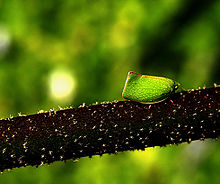The Plant Hopper
Can we all imagine? LIFE WITH OUT COCONUT AND PALMS
DISEASE: Lethal yellowing of palms
PATHOGEN: ‘Candidatus Phytoplasma palmae’
HOSTS: Palms (species in the family Arecaceae); Pandanus utilis (Pandanaceae)
Lethal Yellowing on Coconut Palms
The Antigua Barbuda Horticultural Society must address this devastating disease to our palm trees with an urgent and collective voice, we want to help to educate the public on what to look for and what to do.
FACTS
This is the reality
During the last four decades, outbreaks of lethal yellowing disease have killed most of the once prevalent tall-type coconut cultivars in parts of Florida and some Caribbean Islands
While coconuts are the most important economic palms affected by this disease, 35 other palm species are susceptible to lethal yellowing.
The Symptoms
Symptom observed on mature palms (the first symptom for immature palms or non-fruit bearing palms) is foliar discoloration.
This symptom varies markedly among coconut cultivars and other palm genera.
For tall-type coconut cultivars (e.g., ‘Jamaica Tall’), the foliage turns yellow, beginning with the lowermost (oldest) leaves and progressing until the entire crown is affected.
In some cases, this symptom is first seen as a solitary, yellowed leaf (“flag leaf”) in the middle of the leaf canopy.
Typically, yellowed leaves remain turgid, but eventually turn brown, desiccate, and hang down to form a skirt around the trunk for several weeks before falling.
As leaf yellowing advances, the spear (youngest) leaf collapses and hangs down in the crown. Death of the bud usually occurs when one-half to two-thirds of the crown has yellowed. Eventually, the entire crown of the palm withers and topples, leaving a bare trunk standing Infected palms usually die within 3 to 5 months after the first appearance of symptoms.
The Disease
Disease Management:
Please contact Dr. Gore Francis or Ms. Kishma Primus for the official word at 764 7378
or
The only effective cure is prevention, i.e. planting resistant varieties of coconut palms and look for certified nuts to replant, know their history and where they are sourced, we must now question plant sellers before you buy and before you plant, and preventing environments ( park or golf like landscapes) this attracts the plant hopper, by being vigilant and inspect your garden for signs of this little green flying insect and diseased plants.
Control of planthopper populations (carriers) could be controlled by repeated insecticide applications the antibiotic oxytetracycline HCl Terramycin in landscapes, but we must think hard before we use, since it can be damaging to the environment over a period of time and with out a 100% guarantee. Planthoppers are flying insects, and they also can be blown around by wind.
Please cut down your diseased palm tree and burn it.


